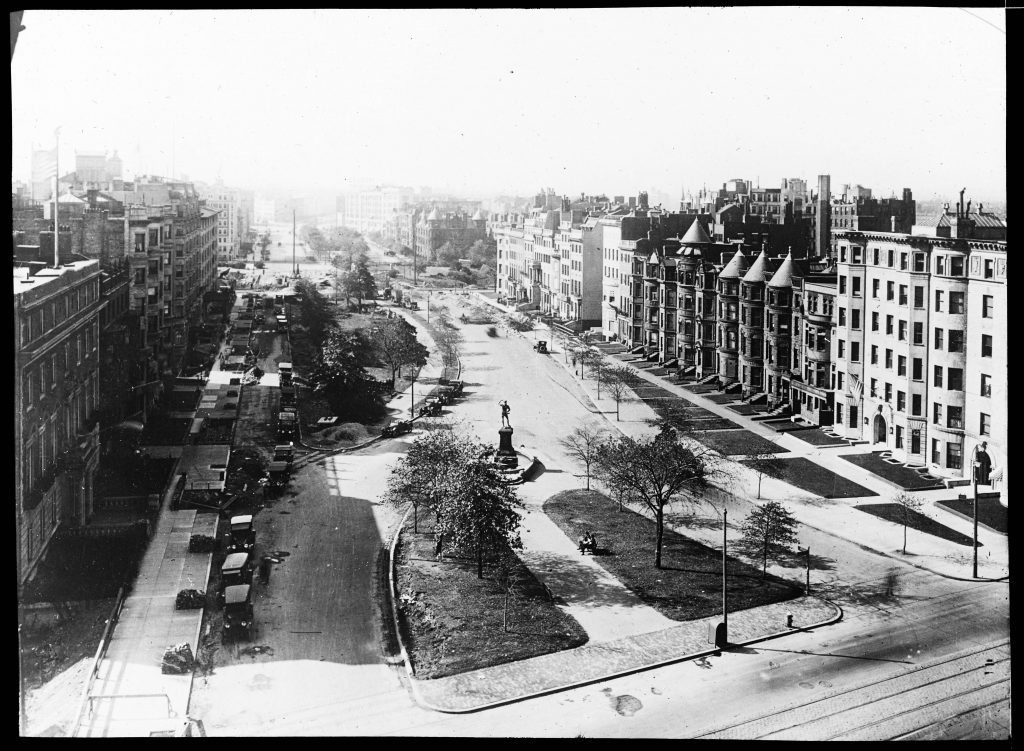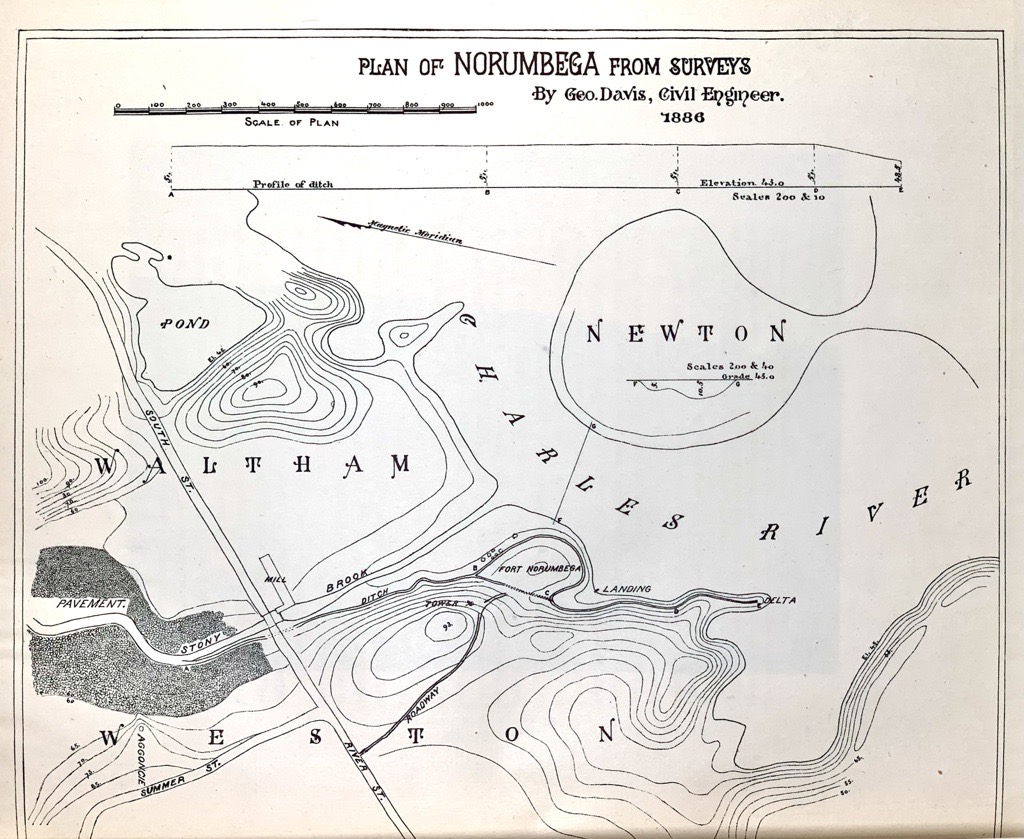Hannah Goeselt, Reader Services

Continued from Part 1.
The Problem of the Northmen. (1889)
The story leading up to the Statue’s unveiling is convoluted. In between the MHS 1880 and the 1887 meeting, the efforts of the Norsemen Memorial committee had fallen away to Eben Norton Horsford alone (though interestingly a committee of the same name funded the statue’s restoration and preservation endowment 100 years later). By then, Horsford had thrown himself into a passion project to find archeological evidence of Viking settlements on the Charles River. This, then, also put him in frequent opposition with members of the MHS, themselves prominent writers of American History. In multiple subsequent publications Horsford airs his grievances with his biggest “critics and censors”[1], MHS members Francis Parkman, Justin Winsor, Henry W. Haynes, and Thomas W. Higginson.
Winsor’s public feud comes from a quote within his eight-volume publication, Narrative and Critical History of America (1884-89), deeming Horsford’s research for his 1888 book Discovery of America by Northmen: Address at the Unveiling of the Statue of Leif Erikson, Deliverd in Faneuil Hall Oct. 29, 1887 as “the most incautious linguistic inferences, and the most uncritical cartographical perversions.” According to a review by Wisconsin prof Julius Olson[2], the 1889 publication by Horsford, The Problem of the Northmen, had been published in direct reaction to Winsor’s harsh words and the opinion of the MHS’s committee on his statue.
Within its pages we learn that the Norseman Memorial project “was long delayed, though ultimately carried out” despite a lack of evidence that Vikings had ever been to New England. Horsford elucidates: “it is quite true that members of the Massachusetts Historical Society discouraged the efforts of the immediate friends of Ole Bull and the two millions of Scandinavians of the West and East who sympathized with him, in his patriotic wish to recognize in a monument, to be set up in Boston, the services of Leif Ericson in the discovery of America. It is also true that they virtually caused the rejection of the city government of Boston of the offer by the late Mr. Thomas [Gold] Appleton of $40,000 for the erection of a memorial in Scollay Square to the Discovery of America by Northmen”.[3]
In a quest to find said evidence, Horsford had taken Winsor out to investigate the site of an old ditch and embankment in Weston. Winsor proclaimed it an early attempt to found the city of Boston, publishing an article saying as much, and ignoring Horsford’s idea that it was, in fact, the remains of a large and permanent Viking settlement.
Horsford continues, “I left the episode to be forgotten. It had not occurred to me that the memory of the excursion to Stony Brook was to take unhappy form and be so lasting, until I was stung with the charge of “perversions,” in a work to be sent as authoritative over the world”. Undaunted by these feelings, in 1889 Horsford erected a giant stone tower on Weston’s bank of the Charles to commemorate the Stony Brook site, now dubbed Fort Norumbega, as evidence of a fantastical “lost city of New England”, an ancient Norse citadel complete with stone seaports in nearby Watertown.

To Be Continued… in pt. 3!
[1] Horsford, Eben Norton. The Defenses of Norumbega and a Review of the Reconnaissances of Col. T. W. Higginson, Professor Henry W. Haynes, Dr. Justin Winsor, Dr. Francis Parkman, and Rev. Dr. Edmund F Slafter. Boston: Houghton, Mifflin and Co. as The Riverside Press, Cambridge (1891): p. 8.
[2] Olson, Julius.Review of The problem of the Northmen and the site of Norumbega… and a reply by Eben Norton Horsford (1891). “It is to these words of Mr. Winsor, together with the opinion of a committee of the Massachusetts Historical Society, adverse to the plan of erecting a monument to Leif Erikson, that Mr. Horsford replies in his brochure”.
[3] Horsford, Eben Norton. Problem of the Northmen. A Letter to Judge Daly, the President of the American Geographical Society, on the Opinion of Justin Winsor, that “though Scandinavians may have reached the shores of Labrador, the soil of the United States has not one vestige of their presence”. Cambridge: John Wilson and Son, University Press, (1889): pp. 7-8.

